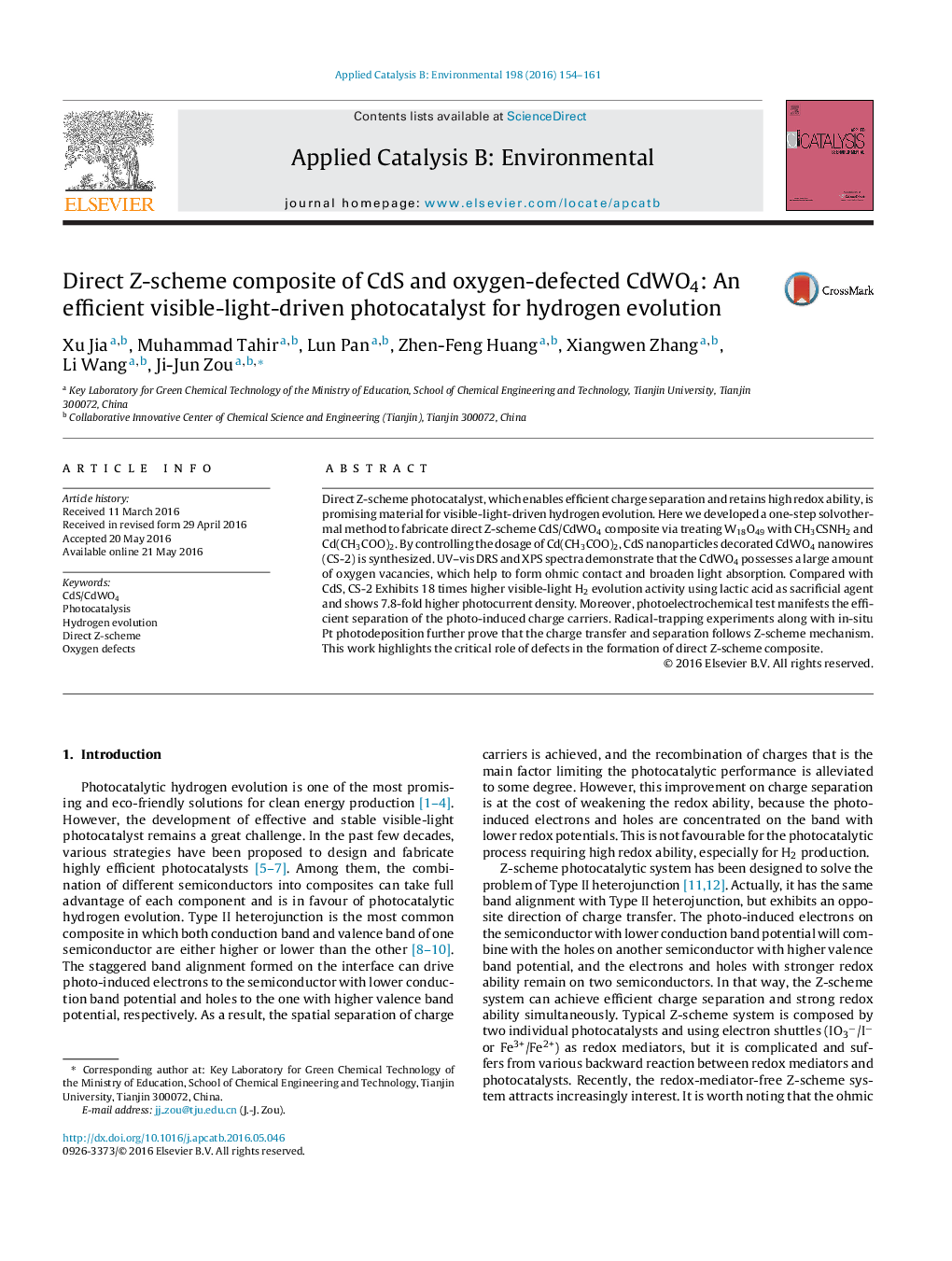| Article ID | Journal | Published Year | Pages | File Type |
|---|---|---|---|---|
| 44725 | Applied Catalysis B: Environmental | 2016 | 8 Pages |
•Composite of CdS and oxygen-defected CdWO4 is synthesized.•Oxygen-defected CdWO4 shows visible-light absorption.•Composite exhibits Z-scheme charge transfer mechanism.•It shows high activity in visible-light-driven hydrogen evolution.
Direct Z-scheme photocatalyst, which enables efficient charge separation and retains high redox ability, is promising material for visible-light-driven hydrogen evolution. Here we developed a one-step solvothermal method to fabricate direct Z-scheme CdS/CdWO4 composite via treating W18O49 with CH3CSNH2 and Cd(CH3COO)2. By controlling the dosage of Cd(CH3COO)2, CdS nanoparticles decorated CdWO4 nanowires (CS-2) is synthesized. UV–vis DRS and XPS spectra demonstrate that the CdWO4 possesses a large amount of oxygen vacancies, which help to form ohmic contact and broaden light absorption. Compared with CdS, CS-2 Exhibits 18 times higher visible-light H2 evolution activity using lactic acid as sacrificial agent and shows 7.8-fold higher photocurrent density. Moreover, photoelectrochemical test manifests the efficient separation of the photo-induced charge carriers. Radical-trapping experiments along with in-situ Pt photodeposition further prove that the charge transfer and separation follows Z-scheme mechanism. This work highlights the critical role of defects in the formation of direct Z-scheme composite.
Graphical abstractFigure optionsDownload full-size imageDownload as PowerPoint slide
